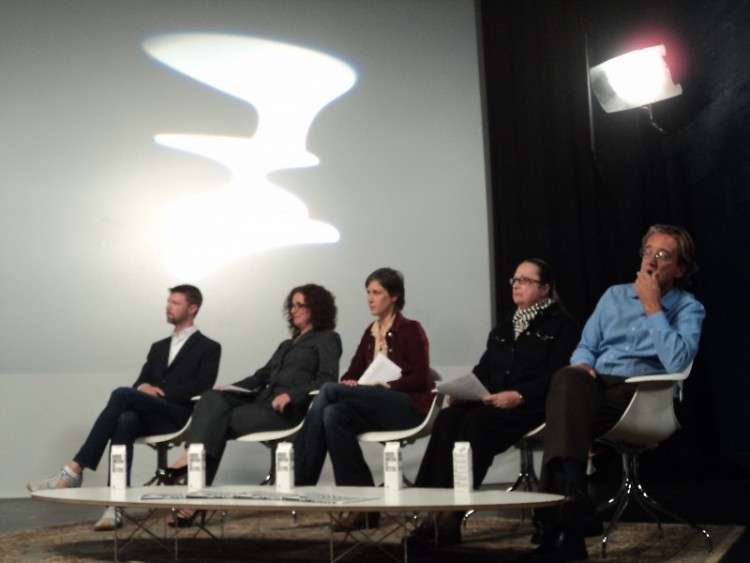Tyler Green Modern Art Notes
Modern Art Notes: Art-Focused Journalism by Tyler Green http://blogs.artinfo.com/modernartnotes/

Left to Right: Green, Freiman, Wilson, Szenasy and Eccles /Laurel Green
Modern Art Notes: Art-Focused Journalism by Tyler Green http://blogs.artinfo.com/modernartnotes/
I had the good fortune to act as an assistant juror to Tyler Green, the juror for two-dimensional works in ArtPrize.
Green has a background in journalism, and an unmistakable commitment to art. In addition to commentary on the ArtPrize works under consideration, as we moved between venues Green commented on the local architecture and culture, and responded (with patience) to my questions about his job. Green writes a monthly column in Modern Painters, and has published in Forbes, Art in America, the Wall Street Journal, Detroit Free Press, Slate and the New York Times. Green’s art blog Modern Art Notes (MAN) includes podcast interviews with artists. While print interviews are not uncommon, to hear an artist responding to thoughtful questions about his or her work is an all too rare experience. There is an absence of contemporary artists’ voices in the media.
Green had an early introduction to the art world. His mother, an artist who studied with Richard Diebenkorn, would take the young Tyler to art exhibitions. This is an important consideration in Green’s approach to art criticism, which is notable for its absence of pretension. I have a conflicted opinion about the highly specialized verbose nature of academic writing, largely because I am an academic who feels a greater obligation to engage students than to impress peers.
I believe there is a misconception about the role of the art critic.
The moniker itself is misleading—an art critic’s role is not to criticize art per se, but to offer a critique or interpretation. While the origin of formal art criticism dates to the 18th century, it was in the 19th century that the role of the art critic became an important means for the public to make informed choices about which exhibitions to visit for themselves.
A useful comparison is to consider the purpose of literary or film reviews--one can consider the informal reaction of someone who has already seen the film or read the book, and/or you can consider the response of a professional. I regard the function of the contemporary art critic as that of an interpreter, not an interloper. While history has certainly illustrated that the opinion of a critic can be flawed for any number of reasons, with so much to see in the context of ArtPrize, the opinions of art professionals is a effective means to guide the public to individual works or venues that would not be included in the popular vote.
Disclosure: I have been an artist participant for the first three ArtPrize events.
The Rapidian, a program of the 501(c)3 nonprofit Community Media Center, relies on the community’s support to help cover the cost of training reporters and publishing content.
We need your help.
If each of our readers and content creators who values this community platform help support its creation and maintenance, The Rapidian can continue to educate and facilitate a conversation around issues for years to come.
Please support The Rapidian and make a contribution today.
Comments
What did he say about ArtPrize?